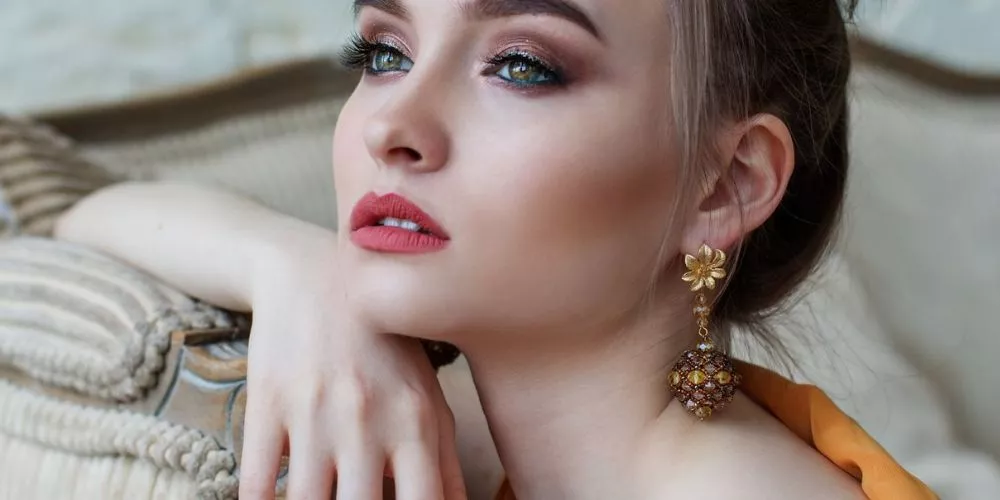Examining fashion trends, one can’t help but notice the tendency of some women to opt for tighter clothing.
This phenomenon of fashion choice presents an interesting dichotomy of personal style and societal influence.
But, do you know why do women wear tight clothes?
This article aims to conduct an objective analysis of this trend, exploring the reasons and underlying factors that lead to such sartorial decisions.

Join us on this insightful journey as we explore the question.
Why do women wear tight clothes?
Women wear tight clothes for various reasons, stemming from personal preferences to societal influences.
Understanding these factors and their implications can help to unravel the intricacies of this fashion choice.
Below, we discuss some key motivations behind the preference for tight clothing among women.
- Comfort: For some women, tight-fitting clothes provide a sense of support and comfort throughout the day. Stretchable fabrics, such as spandex and elastane, can mold to the body’s shape, ensuring freedom of movement and reducing chafing or discomfort caused by looser garments.
- Body Confidence: Tight clothes can accentuate a woman’s natural curves, allowing her to feel more confident about her body. This heightened self-esteem can impact overall well-being and self-image positively.
- Fashion Trends: Fashion trends often cycle in and out of popularity. Tight clothes have been in vogue at various points in history, such as the iconic “little black dress” or sleek bodycon outfits. Adhering to these trends can contribute to a sense of personal style and connection to the broader fashion world.
- Athletic Purposes: Women involved in sports and fitness activities may wear form-fitting garments to ensure flexibility, support, and functionality. Compression clothing, such as leggings and sports bras, can provide physical benefits like improved circulation and muscle support during workouts.
- Professional Settings: In some work environments, wearing tight clothes can be seen as a way to communicate self-assurance and competence. For instance, a well-fitted suit or tailored dress might signal a commitment to professional standards and career aspirations.
- Sexual Attraction: Tight clothes can enhance a woman’s sensual appeal by emphasizing her physical attributes. While this may not be the primary motivation for wearing form-fitting garments, it can be a contributing factor in certain social situations.
- Social Pressure: Societal expectations can influence women to adopt specific fashion choices, including tight clothing. Celebrities, advertising, and media portrayals of beauty standards may impact women’s decisions, often encouraging them to conform to certain ideals.
In summary, the reasons women wear tight clothes are multifaceted and complex.
While motives like comfort, body confidence, athletic purposes, and fashion trends significantly contribute to this preference, it’s crucial to acknowledge societal pressures.
Understanding the nuances of this fashion choice enables a broader perspective, encouraging empathy and reducing judgment in an already complex world of self-expression.
Why do Female Newscasters Wear Tight Dresses?
Female newscasters often wear clothing, including tight dresses, that isn’t just chosen for aesthetics but also for practical reasons related to television broadcast.

- On-Camera Appearance: Television can distort the viewer’s perspective, making loose clothing appear overly baggy. Tight, well-fitted clothing can help presenters maintain a meticulous professional image and ensure the audience focuses on the content rather than the attire.
- Consistency: News channels often have a strict dress code to maintain visual consistency. In general, newscasters wear solid, bright colors and avoid patterns to reduce on-screen distortion. The choice for a tight dress might thus be directed by these professional restrictions rather than personal choice.
- Confidence Boost: Just like any other professional, newscasters may feel more confident when they are well-dressed. This confidence can come across on camera, ensuring the reporter’s credibility and authority.
It’s crucial to note that their wardrobe is not intended to sexualize or objectify them, but rather to adhere to professional standards.
Do Girls Wear Tight Clothes for Attention?
The choice to wear tight clothes involves several reasons, and seeking attention might be one of them, but it’s not universally true for all girls.
- Self-Expression: Girls often use clothing as a tool for self-expression. Tight clothes might highlight their personality, make them feel more confident, or simply align with their personal style.
- Conforming to Trends: Fashion trends influence many people’s clothing choices. If tight clothes are in trend, more girls may wear them to align with popular style, not necessarily to seek attention.
- Comfort and Utility: Wearing tight clothes is not always about aesthetics or getting noticed. Some girls might wear tight clothes because they find them comfortable or practical for certain activities, like sports or dancing.
- Peer Influence and Media: Images on social media and peer influence can shape a person’s choice to wear tight clothes. This may not be directly tied to getting attention, but rather an inclination to fit in with peers or emulate role models.
Some girls might wear tight clothes to attract attention—it can be a way to showcase their individuality, foster self-confidence, or even flirt. However, it’s crucial not to overgeneralize.
The choice to wear tight clothes is a personal one, influenced by an amalgamation of factors, and attention may not always be the aim.
Judgment or assumptions on this front can lead to objectification and undermine the intention behind personal wardrobe choices.
What is the Psychology of Revealing Clothing?
The choice to wear revealing clothing can be influenced by several psychological factors.

- Self-Expression: Clothes can be a powerful medium for expressing personal style, attitude, or mood, and some may choose revealing attire as part of their identity projection.
- Confidence and Body Positivity: Revealing clothing may be worn out of body positivity and self-confidence, demonstrating acceptance and celebration of one’s physical attributes.
- Social Influence and Trends: Fashion trends and societal norms can also shape clothing choices. With celebrities and influencers often setting trends for revealing clothing, many may emulate these styles.
- Sexual Attraction: Some individuals may wear revealing clothing to enhance their sexuality or attract potential romantic interests, influenced by the innate psychological aspect of attracting mates.
Why do Women Wear Revealing Clothes but Men Don’t?
Societal norms and expectations historically have dictated different standards for men and women, among which includes clothing choices.
- Cultural and Societal Expectations: Women’s fashion has historically been more varied, with societal norms allowing women a broader scope in terms of reveal.
- Gender Roles: Traditional gender norms, perpetuated over centuries, have led to more conservative apparel for men in many cultures whereas women’s clothing is more subject to trends, which may include revealing styles.
- Sexual Double Standards: The prevailing narrative tends to link women’s attractiveness to their physical appearance more than it does for men.
Remember that these are not rules but rather patterns influenced by societal norms that are constantly changing and evolving.
Is Wearing Revealing Clothes Disrespectful?
Whether wearing revealing clothes is disrespectful or not is subjective and can vary greatly based on social, cultural, and personal perspectives.
- Cultural Sensitivity: In certain cultures or settings, wearing revealing clothes might be considered disrespectful or inappropriate.
- Personal Freedom and Respect: On the other hand, proponents of personal freedom might argue that everyone has the right to wear what they feel comfortable in as long as it doesn’t infringe upon the rights of others.
Do Narcissists Wear Revealing Clothes?
While clothing choice can be a form of expression, it’s ineffective and potentially harmful to make broad generalizations about someone’s personality or psychological traits based solely on their attire.
Narcissists, individuals with Narcissistic Personality Disorder, can have diverse tastes in clothing, just like anyone else.

Although a common stereotype suggests narcissists might gravitate toward flashy or attention-grabbing apparel, this isn’t a definitive measure of a person’s narcissism.
It’s always important to avoid labeling or making assumptions about someone based solely on their appearance.
In conclusion, clothing choices, particularly those involving revealing garments, are driven by a myriad of personal, social, and psychological factors.
But these choices should not be taken as an exclusive reflection of a person’s character or morals.
Conclusion :
The motivations driving women’s choice to wear tight clothes are multifaceted and attributable to personal style, comfort, confidence, societal trends, professional expectations, and the individual’s perception of their body.
Social pressures also play a significant role, deriving influence from media portrayals and beauty standards.
However, regardless of the numerous motivations behind this fashion choice, it’s essential to respect individual freedom and avoid judgment based on clothing.
The onus lies on society to promote an environment where every choice is viewed with understanding and empathy.
